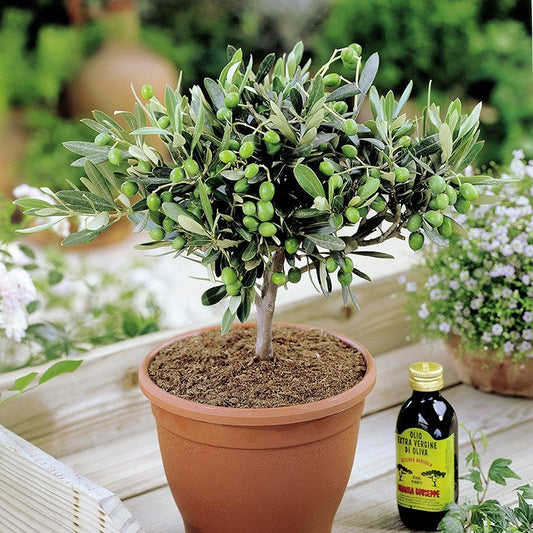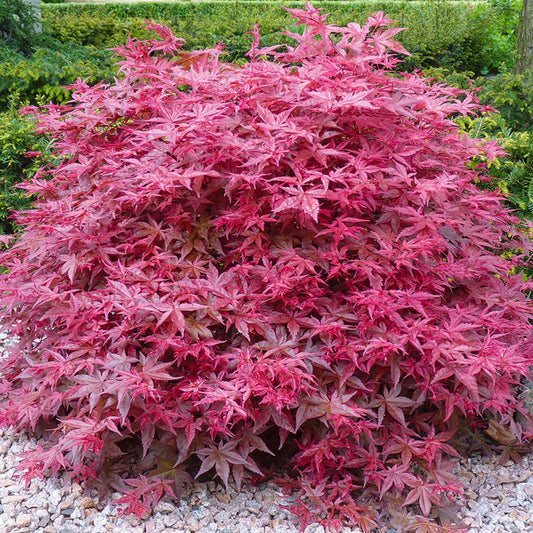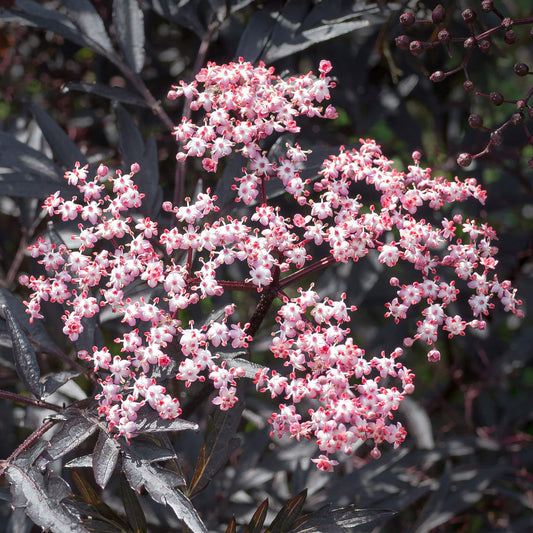Product description
Here is an improved form of Malus robusta, the ‘Fruitilicious’. It is a small tree or large shrub that has large white flowers with hints of pink that open in late April - May. In autumn, its bright flowers are followed by deep orange apples, the largest of all Malus crab apples. Now you know why it is fruitilicious!
This Malus variety comes from Norfolk with multi-season interest. Its single white flowers are real attention in spring and summer. They produce valuable nectar for bees and butterflies. In September, you can see clusters of deep red oval fruits which last long until end December. These fruits attract birds and wildlife of all kinds, therefore ensuring hustle-bustle in your garden when most plants lay dormant. These apples are excellent for making jelly.
Malus Fruitilicious can easily grow in average soils with low maintenance, and does not demand dedicated care. However, if possible, plant it in a well-drained soil that is rich in nutrients. It will thrive in a full sun or partial shady location.
Generally, it does not require pruning. You can remove any dead or damaged twigs and prune only to correct and improve the shape of the crown. It is completely resistant to frost.
Fruitilicious is a new variety but a stunning Malus with delicious fruits. Crab apple trees are perfect for people who wish a wildlife friendly garden. It is a perfect choice as a single specimen in small gardens or large gardens in groups.
Plant specs, care guide & tips
Key features
Specifications
When to plant
| Jan | Feb | Mar | Apr | May | Jun | Jul | Aug | Sep | Oct | Nov | Dec |
|---|---|---|---|---|---|---|---|---|---|---|---|
Planting and period of interest times are general guidelines and may vary based on your location and conditions. For best results, consult local gardening resources.
Instructions
Top Tip
Feed Malus trees with a balanced fertiliser in early spring to support growth and flowering. Prune annually during winter to remove dead, damaged, or crossing branches and maintain an open shape, which improves air circulation and reduces disease risk. For fruiting varieties, thinning the fruitlets in early summer ensures larger, healthier fruits. Protect young trees from harsh winds and frost, as this can damage their growth and blooms.
How to Water
Water Malus trees deeply and regularly during their first year to help them establish a strong root system, especially during dry spells. Once established, they are relatively drought-tolerant but benefit from additional watering during prolonged dry periods or when fruit is forming. Water early in the morning or late in the evening to minimise evaporation and focus on the base of the tree to avoid wetting foliage, which can lead to fungal issues. Mulching helps retain soil moisture and keeps the tree healthy.
How to Plant
To plant Malus, select a sunny position with fertile, well-draining soil that is neutral to slightly acidic. Dig a hole twice the width of the root ball and the same depth, loosening the soil at the base to encourage root growth. Place the tree in the hole with the graft union above soil level and backfill gently, firming the soil to remove air pockets. Water thoroughly after planting and apply a layer of organic mulch around the base, keeping it clear of the trunk to prevent rot. Space trees appropriately to allow for their eventual size and shape.























